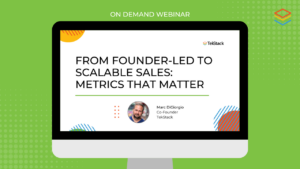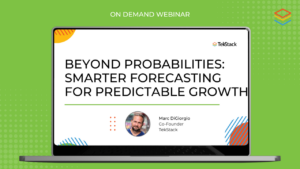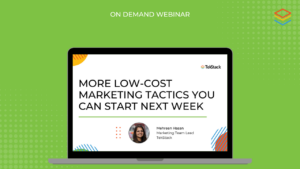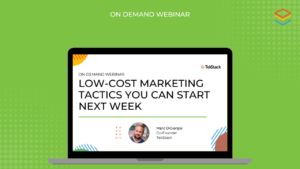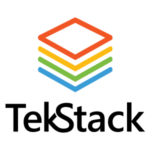
An issue that Microsoft partners are facing this year, especially Business Central partners, is what many in our ecosystem refer to as ‘True Down’ risk. The antonym of ‘True Up’, True Down refers to the consumption gap that your customer may be realizing today. Many have bought too much software, more than they are using. When its time for renewal, in an economically challenging time, where capital is preserved and re-prioritized, where all costs are under scrutiny, these companies are ‘trueing down’ their investments.
We all know, and many studies have proved it, that you have to come up with a disruptive sales narrative when you want to poach a customer from a competitor. However, your engagement message with existing clients is anchored around defending your position – you are the status quo. Learn how to leverage the status quo bias, since it works in your favor.
While ‘true down’ is bad news for partners, the good news is that it’s a situation that is entirely preventable. In this blog article, Marc DiGiorgio and Christian Lehmann pen four ways that partners can not only eliminate ‘True Down’ risk, but increase Net Retention amongst customers.
Eliminate Buyer Remorse – You are the status quo
Your competitors certainly go after your customers. At the same time, your existing customers ask themselves questions to ascertain why they should stay with you as an IT partner. Reinforce why they should stay with you and ensure that buyer’s remorse does not set in. This is a common cognitive dissonance people experience when they make big and expensive purchases, especially of intangible assets that have a high degree of failure. Your buyer is putting their business, or job, or reputation on the line. Preventing a communication vacuum will prevent remorse from setting in. Here are the easiest ways to ease this issue:
- Max out on communication immediately. Send a welcome package from the services team. Seller to introduce the services lead who then sets expectations for next steps, sends homework items.
- Conduct a thorough Sales to service handoff making sure the services team understand the business drivers, goals, current landscape, known product gaps, and any other constraints.
- Keep documenting why the customer initially decided to buy from you. Collect, and keep the data and talk with your customer frequently about how they benefit from the current solution.
- On the over communication front, have your CEO send a handwritten thank you to the Economic buyer. Open up an escalation line of communication.
- Have a kick off meeting that includes personal ice breakers. Building personal relationships early will go a long way when times get tough on projects.
- Set an internal SLA that all customer emails get answered within 24 hours. Problems fester.
Focus on Faster Time to Value – Get your customers live quickly!
Your finish line (go-live) is your customer’s starting line. It’s the day they start to realize value from their investment. Start documenting this value. But complex IT projects like ERP implementations can be a challenge to get implemented. If they are not managed well, projects can get delayed for reasons beyond the control of the vendor. Here are some things you should consider doing to reduce project risk:
- Start every project from a template so that the project manager doesn’t have to make a new plan each time. The template should define tasks, resource requirements, and budgets. Its easier for a PM to modify from a template than to start from scratch.
- Compress your delivery cycle. Offer pre-configured packages, and packaged solutions, and apply repeatable implementation methodologies that provides safety to the customer.
- Focus on quick wins. Keep projects as small as possible. The sooner a customer is getting value from the software before the renewal, the lessor the risk of true down.
- Create implementation packages that define scope (whats in, but more importantly, what’s not). Ideally this is communicated on the services agreement or order form.
- Offer this packages with risk reduced billing models like fixed priced projects (with fixed scope and timeline of course!).
- Track RAID. This is risks, actions, issues, and key decisions. Ideally not in a spreadsheet. This is where the scope creep starts.
- Track Change Requests. Even if you decide not to charge for the change request, a customer needs to get into the habit of approving changes. It should be easy for the PM to create a change request order form that can be emailed and approved.
Remember the sooner a customer is live, the sooner they realize value. If there are delays, or overruns, its important to understand the root cause of those variances so the customer can rationalize it internally. Nothing should ever be a surprise to the customer.
Create Customer Success Playbooks
This is the time to transition the customer relationship from services to customer success. Lift your account management and marketing automation to a next level. It is not only about change but certainly about connecting. Its not realistic to assign a customer success manager (or account manager) to every customer. If you have 100 customers and two CSMs, managing 50 customers is a lot of work. The better approach would be to segment your customers into three segments.
Strategic Accounts. These are the accounts that have potential to grow AND have a desire to grow. This isn’t just a list of your largest customers, as not all large customers want to do more with you. Think 80/20 on this. If you have 100 customers, only 20 will be in this segment which is more reasonable to split between a couple CSMs.
Pragmatic Accounts. These are the majority of customers that have lower desire to adopt new technology, or have less capacity because of company size. Their approach to this investment is more pragmatic than strategic.
At-Risk-Accounts. Unfortunately, there is always a set of customers that will be at risk. These should be identified so that you can put the right playbook in place, and also identify the recurring revenue that is at risk for renewal.
Once customers are segmented, its time to create playbooks and a content plan. Develop content that different persona at your customer potentially needs to reinforce the status quo bias. Provide the right persona with the appropriate content to ensure you are connected and they see additional value coming their way. Value that asks the question why they should stay with you. Remember, status quo is a friend. Leverage marketing automation. Keep working on the market and industry relevance of your solution. Showcase what trends you identify, proactively talk about evolved competitor products, and connect your findings to your road map. That shows, there is a solution parity, and your customer is safe in their current status quo. You prove that you keep both your customers and your solution offering updated throughout your existing relationship.
Playbook Examples
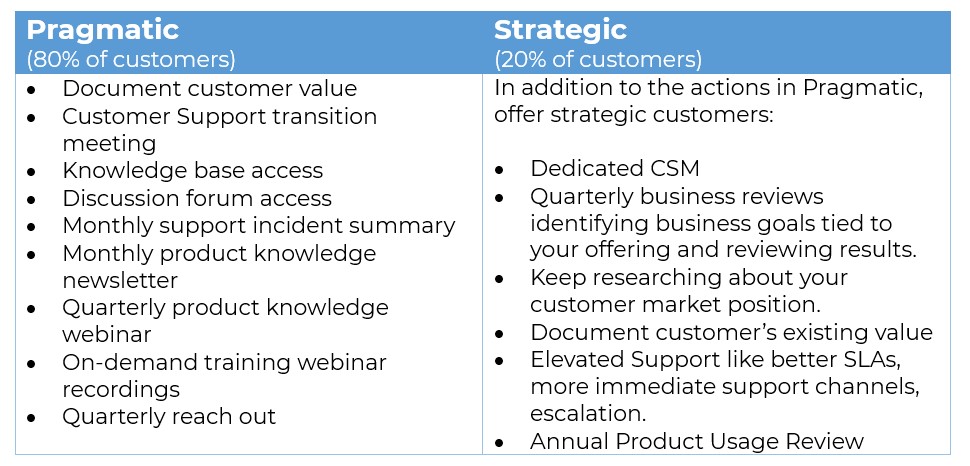
Playbook examples for B2B SaaS customer success
Customer-at-risk Playbook
In addition to these two playbooks, a third playbook should be defined for ‘At-Risk Customers’. Any customer that is at risk should have:
- Executive Action Plan that defines issue and resolution, and multi-stakeholder communication.
- Bi-weekly action plan review meeting with the customer that should never be missed.
Renewal Playbook
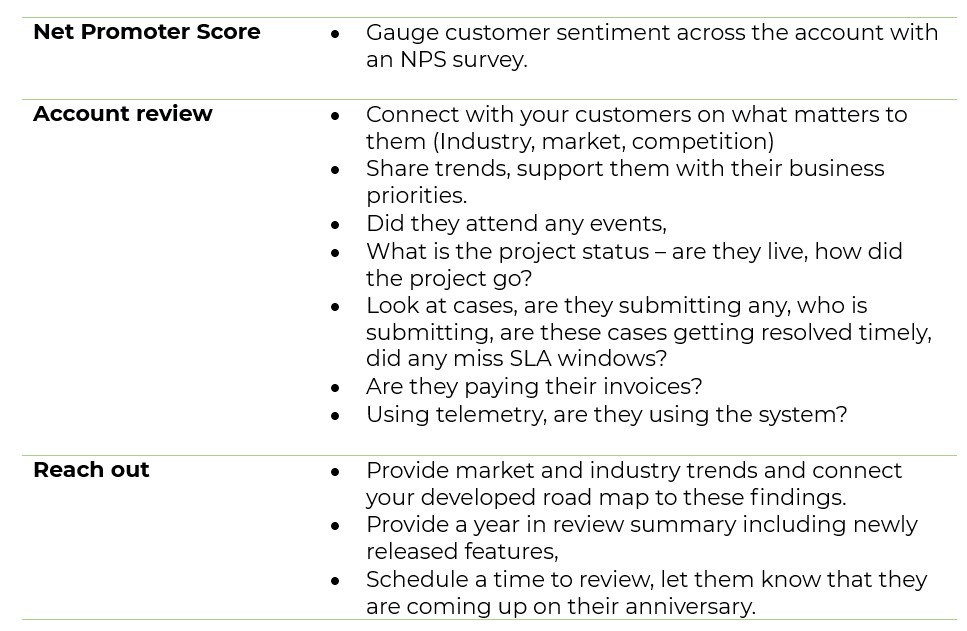
Renewal Playbook for B2B SaaS
Install Smoke Detectors – Spotting customer health issues early
There are signals that allow you to identify customers that could be at risk. Its best to tackle these before they grow into fires.
Customer Sentiment. Use a survey like Net Promoter Score to gauge customer sentiment. Ideally track responses by contact type (ex. exec, user). Send a survey as part of the on-boarding, and at go-live. Compare those scores against scores 90 days prior to renewal.
Telemetry – Microsoft products like Azure and Business Central make it possible to track system usage. Its not the easiest thing to automate in one view, but it’s a start. If a customer isn’t using the system, there could be reasons that could be unlocked. The earlier the better.
Health Scoring. A simple red, yellow, green indicator on an account is an elegant way to identify customers that are at risk. This can be manually updated to based on payment status, support cases, project progress, system usage, customer NPS scoring.
Customer Support Reporting. An automated and well-established routine that helps your employees grasp the current customers’ hot topics. It is a good sign when they deal with your solution- even if they have a complaint. But be cautious with your customers who have not submitted a ticket for a longer time. A competitor is distracting them from you.
Conclusion
Microsoft partners that implement platforms like Business Central and Azure can eliminate ‘True Down’ threat by implementing basic customer focused business processes. Your existing customers are a significant contributor to your organization’s value. In an ecosystem where switch costs and de-investment is easy, Business Central partners should build programs that improve Net Retention. The result will be more revenue and higher company valuation.
Establishing these processes is easy when you combine good leadership with defined processes and tools.
About your Authors
Dr. Christian Lehmann is the former CEO of one of the largest Dynamics 365 partners in Europe. He is currently COO of Neural Impact and works with 100s of partners building accelerated programs to improve Microsoft partner’s operations.
Marc DiGiorgio is the co-founder of TekStack. Marc has scaled multiple software companies beyond the $20M revenue threshold, and has been in the Microsoft partner community for two decades. He built and ran JustFoodERP, one of North America’s most successful examples of a vertically focused NAV/BC business.
At TekStack, we focus on elevating the revenue operations of B2B software companies so that our customers can grow profitably and get the valuation they deserve. We support every step of the customer journey with tools that embed good process and deliver insights. All powered by Microsoft Cloud.



